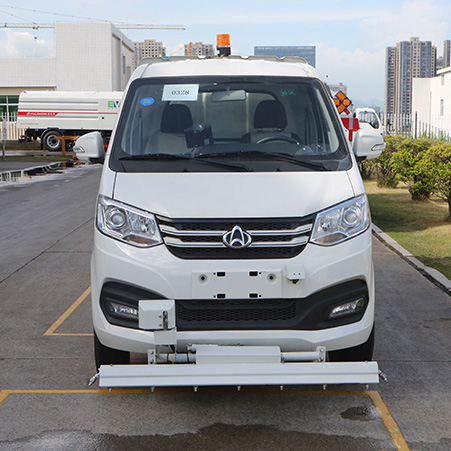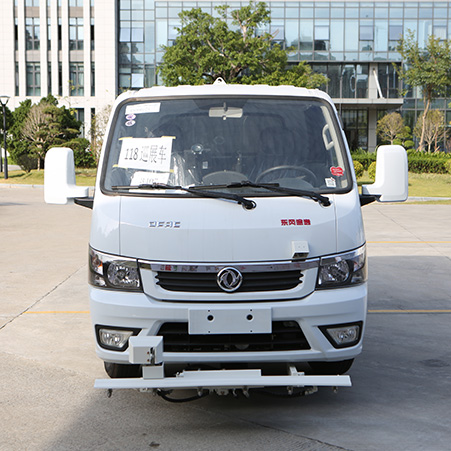Among the various types of electric vehicles making their mark, electric road maintenance vehicles are emerging as key players in urban infrastructure management. These specialized EVs are designed to perform essential tasks such as street sweeping, road repair, and snow removal, all while minimizing environmental impact. As cities strive to become more sustainable and eco-friendly, the adoption of electric road maintenance vehicles is gaining momentum. These vehicles not only help maintain clean and safe streets but also contribute to the broader goals of reducing emissions and promoting green technologies.

The Need for Sustainable Road Maintenance
The environmental impact of traditional road maintenance vehicles cannot be overstated. Diesel-powered vehicles emit harmful pollutants such as nitrogen oxides and particulate matter, which contribute to respiratory problems and other health issues. Moreover, the noise pollution generated by these vehicles can disrupt urban life, affecting the well-being of residents. Sustainable road maintenance, therefore, is not just about cleaner streets but also about creating healthier and more livable cities. The shift towards electric road maintenance vehicles addresses these issues by providing a cleaner, quieter, and more efficient solution.
Evolution of Electric Road Maintenance Vehicles
The journey towards electric road maintenance vehicles began with the broader transition to electric mobility. Early efforts focused on developing electric versions of personal cars and public transport. As the technology matured, attention turned to other essential vehicles, including those used for road maintenance. Initial models of electric road maintenance vehicles were often experimental, facing challenges such as limited battery life and high costs. However, continuous advancements in battery technology, motor efficiency, and vehicle design have led to the development of practical, reliable, and cost-effective electric road maintenance vehicles. Today, these vehicles are becoming a common sight in forward-thinking cities around the world.
Technological Innovations in Electric Road Maintenance Vehicles

The latest electric road maintenance vehicles are marvels of modern engineering, packed with innovative features that enhance their performance and efficiency. Key technological advancements include:
- High-Efficiency Batteries: Modern electric road maintenance vehicles are equipped with high-capacity batteries that offer longer operational times and faster charging capabilities.
- Smart Features: Integration of Internet of Things (IoT) technologies allows these vehicles to be connected to central management systems, enabling real-time monitoring and optimization of maintenance tasks.
- Autonomous Capabilities: Some advanced models feature autonomous or semi-autonomous driving capabilities, reducing the need for human operators and increasing efficiency.
- Energy Recovery Systems: These systems capture and reuse energy during braking and other operations, further enhancing the vehicle’s efficiency.
- Noise Reduction Technologies: Electric motors are inherently quieter than internal combustion engines, but additional noise reduction technologies make these vehicles even more silent, minimizing urban noise pollution.
Conclusion
Electric road maintenance vehicles are at the forefront of the movement towards sustainable urban infrastructure. They offer a multitude of benefits, including reduced emissions, lower operating costs, and quieter operation, all of which contribute to healthier and more livable cities. As technology continues to advance, these vehicles will become even more efficient and accessible, driving further adoption across the globe. By embracing electric road maintenance vehicles, cities can lead the way in sustainable urban development, setting a positive example for communities everywhere.
FAQs
What are electric road maintenance vehicles?
Electric road maintenance vehicles are specialized electric vehicles designed to perform tasks such as street sweeping, road repair, and snow removal. They operate on electric power, producing zero tailpipe emissions and significantly reducing environmental impact compared to traditional diesel-powered maintenance vehicles.
How do electric road maintenance vehicles compare to traditional vehicles in terms of cost and efficiency?
While the initial cost of electric road maintenance vehicles can be higher than traditional vehicles, they offer lower operating and maintenance costs over time. Electric vehicles have fewer moving parts, reducing the need for frequent repairs and servicing. Additionally, the cost of electricity is generally lower than diesel fuel, resulting in significant savings. In terms of efficiency, electric vehicles are highly efficient, converting a greater percentage of energy from the battery to power the vehicle, compared to internal combustion engines.
Are there any government incentives for adopting electric road maintenance vehicles?
Many governments offer incentives to promote the adoption of electric vehicles, including road maintenance vehicles. These incentives can include tax credits, grants, rebates, and subsidies for purchasing electric vehicles and installing charging infrastructure. Additionally, some regions may offer reduced registration fees and exemptions from certain environmental regulations.






